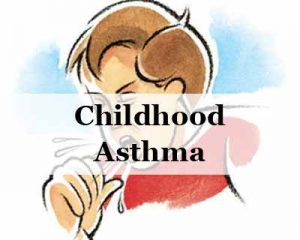- Home
- Editorial
- News
- Practice Guidelines
- Anesthesiology Guidelines
- Cancer Guidelines
- Cardiac Sciences Guidelines
- Critical Care Guidelines
- Dentistry Guidelines
- Dermatology Guidelines
- Diabetes and Endo Guidelines
- Diagnostics Guidelines
- ENT Guidelines
- Featured Practice Guidelines
- Gastroenterology Guidelines
- Geriatrics Guidelines
- Medicine Guidelines
- Nephrology Guidelines
- Neurosciences Guidelines
- Obs and Gynae Guidelines
- Ophthalmology Guidelines
- Orthopaedics Guidelines
- Paediatrics Guidelines
- Psychiatry Guidelines
- Pulmonology Guidelines
- Radiology Guidelines
- Surgery Guidelines
- Urology Guidelines
Distinct nasal airway microbiota may increase asthma exacerbation risk in children

USA: Distinct nasal airway microbiotas of children with asthma characterized by the dominance of Moraxella are at increased risk of asthma exacerbation, respiratory illnesses, and rhinovirus infection during the fall season, according to a recently published study in the Journal of Allergy and Clinical Immunology.
Distinct nasopharyngeal bacterial microbiotas in infants are associated differently with the severity and incidence of childhood asthma development and respiratory tract infection.
Kathryn McCauley, Department of Medicine, University of California, San Francisco, Calif, and colleagues determined whether that distinct nasal airway microbiota structures also exist in children with asthma and relate to clinical outcomes.
For the purpose, the researchers collected nasal secretion samples during the fall season from children aged 6 to 17 years who were enrolled in a trial of omalizumab. Dominate nasal airway microbiota population was determined using the 16S rRNA profiling. They then assessed the correlation between dominate nasal airway microbiota populations and clinical outcomes.
The primary outcome was the rate of exacerbation; rates of rhinovirus infection and respiratory illnesses were secondary outcomes.
Key findings of the study include:
- Among the 3122 nasal secretion samples collected from 413 children with asthma, 6 nasal airway microbiota assemblages were observed.
- Each assemblage was dominated by a different species: Moraxella, Staphylococcus, Corynebacterium, Streptococcus, Alloiococcus, or Haemophilus.
- Nasal microbiota dominated by Moraxella was associated with increased exacerbation risk and eosinophil activation, while Staphylococcus– or Corynebacterium-dominated microbiota were associated with reduced respiratory illness and exacerbation events.
"More in-depth investigations are needed to determine the interaction between distinct nasal airway microbiomes, more specifically active members of these assemblages and host mucosa for protecting or promoting exacerbations in children with asthma," wrote the authors. "Identifying children with asthma based on their microbiome who are at increased risk for exacerbation could lead to targeted strategies to promote appropriate nasal airway mucosal colonization and potentially reduce exacerbation risk."
To read the complete study log on to https://doi.org/10.1016/j.jaci.2019.05.035

Disclaimer: This site is primarily intended for healthcare professionals. Any content/information on this website does not replace the advice of medical and/or health professionals and should not be construed as medical/diagnostic advice/endorsement or prescription. Use of this site is subject to our terms of use, privacy policy, advertisement policy. © 2020 Minerva Medical Treatment Pvt Ltd